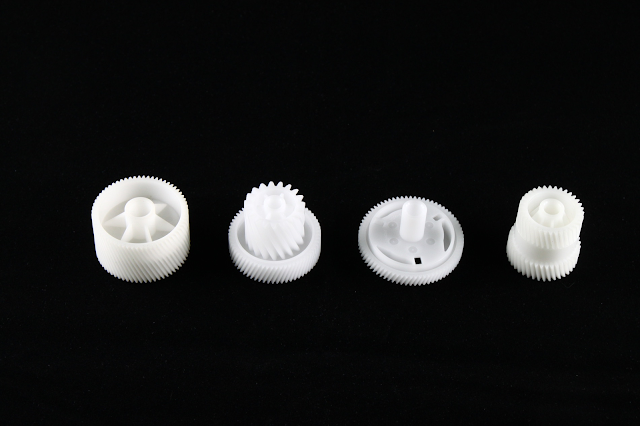Go Through the Guide to Injection Molding
Injection molding is a procedure used to produce huge numbers of
items. Compared to other production processes, such as CNC machining and 3D
printing, it necessitates an initial capital investment in tooling. However,
individual piece-part prices will be significantly lower when compared to
alternative methods of producing plastic components. This pricing structure
makes it a reasonable option for production runs. It is most commonly utilized
for large-scale plastic part manufacture because of its low material waste and
cheap cost per part.
How does injection molding
work?
Tooling fabrication: After an
injection molding design is finalized, the first stage in the production
process is to mill the tooling, which is commonly made of steel or aluminum. In
most situations, the metal block of material is fed into a CNC mill, which
subsequently carves out a negative of the final plastic portion. Additional
treatments, like as polishing or laser etching, can subsequently be done to the
tooling to produce desired surface finishes. The real manufacture of plastic
parts begins with the loading of resin pellets into barrels. The barrel's temperature
is increased until the resin pellets are molten and then crushed. The molten
plastic is then pumped into the metal tool via a runner system, where it feeds
into the mold cavity via gates. The component then cools, hardens, and is
removed from the tool using ejector pins.
Types of Injection Moulding
Plastic injection molding
refers to a variety of procedures that involve injecting liquid resin into a
tool to produce plastic objects. There are four common types:
Thermoplastic injection
molding: The most frequent molding process is thermoplastic injection
molding. It injects thermoplastic resin into the mold, which cools to make the
finished object.
Liquid silicone rubber molding involves the employment of thermoset materials and a chemical reaction to make the plastic item.
Insert Moulding: Insert molding by Injection Molding Supplier is a procedure that begins with an insert component being inserted in the mold before resin is added. The material is then injected and flows around the insert, which is often metal, to create the finished portion. This is commonly used for components that require metal threads.




Comments
Post a Comment